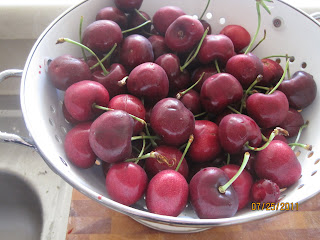 |
| Pesto on bread (for a burger) |
I got a bunch of basil at the Culver City farmer's market last week, and did the only thing I could think to do--made pesto. Now traditionally, pesto goes on pasta, and I haven't exactly had the time to make pasta from scratch, but one of the beautiful things about pesto is it's versatility. You can add ingredients or leave them out based on your preference. It's more than just a good pasta sauce, it's a good spread on bread, is absolutely delicious mixed into rice, tossed with tomatoes, or cooked onto a piece of fish. I've also mixed pesto and balsamic vinegar to make an incredible salad dressing. And I'm only getting started.
 |
| Some of the raw ingredients |
First, toast some pine nuts. If you're into the raw food thing you can do this with raw nuts, but toasting pine nuts really brings out their flavor. Just put them in a pan (no oil necessary) over medium heat. Move them around a lot, and pay attention. Pine nuts go from golden brown and delicious to burnt in a matter of seconds. Once they're toasted, set them aside. let them cool.
 |
| Cheese! |
Next, grate some good Parmesan cheese into the bowl of your mixer. If you're a cheese addict, use a lot. If you're not, just use a little. The more cheese you use, the less salt you want to add. Always taste things before salting them.
Once you've got your cheese grated, add some cloves of garlic to the food processor. Whole cloves are fine. They'll get pulverized. I'm a fan of REALLY garlicky pesto. I added something like 8 cloves. You don't need to be as addicted to garlic as I am. Unless you are.
Next, I added the basil leaves. All the ones I had that I wasn't going to use instead of lettuce on sandwiches. I ended up filling the bowl of my food processor about 3/4 of the way full of basil leaves. That's just as many as I had. Your batch size can vary based on the amount of basil, and the size of food processor you have. I also dumped the pine nuts in at this point. They were cooled down.
Once all these things were in the food processor, It was time to pulverize everything. I pulsed the mixer until everything was ground up. At this point, I tasted the mixture and added salt to my taste.
To reiterate: At this point, there's basil, Parmesan, garlic, pine nuts, and salt in the food processor. Nothing more. And it's already delicious.
 Once all that was in the food processor, and everything was ground up, it was time to add the olive oil. I don't add a ton (the whole eating healthy thing precludes eating a ton of oil). I've seen incredibly thin, oily pesto and pesto without any oil. It all has it's uses. The important thing is to stream the oil into the mixture while the food processor is running. This helps the oil emulsify into the pesto, instead of sitting like an oil slick on top of it. Eventually some separation will occur. But let's start it out all blended and nice.
Once all that was in the food processor, and everything was ground up, it was time to add the olive oil. I don't add a ton (the whole eating healthy thing precludes eating a ton of oil). I've seen incredibly thin, oily pesto and pesto without any oil. It all has it's uses. The important thing is to stream the oil into the mixture while the food processor is running. This helps the oil emulsify into the pesto, instead of sitting like an oil slick on top of it. Eventually some separation will occur. But let's start it out all blended and nice. |
| Pesto in rice |
 |
| Pesto Burger |
 |
| Pesto on salad |



























